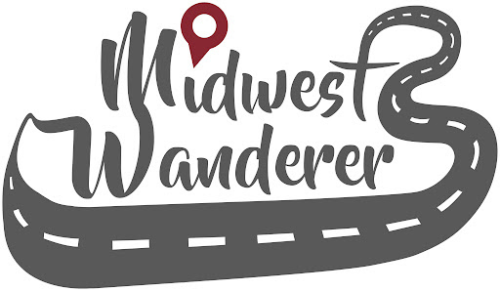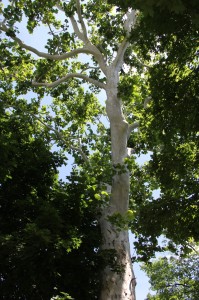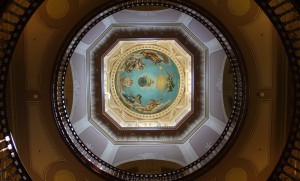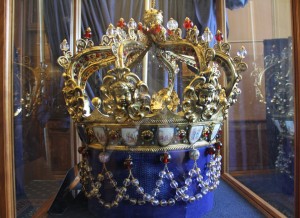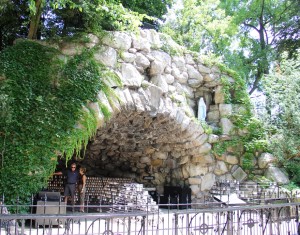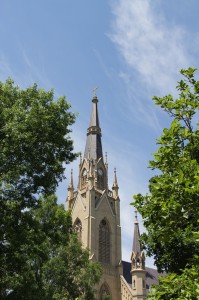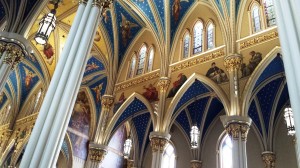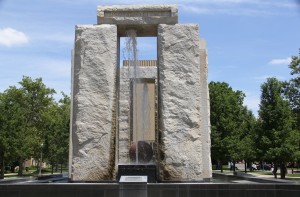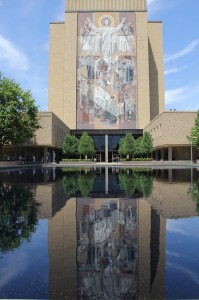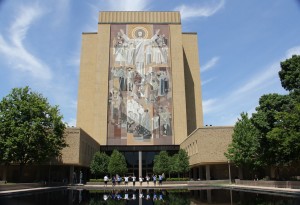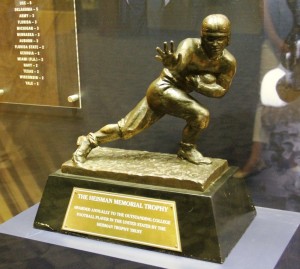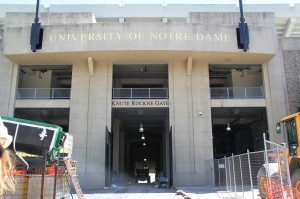There’s nothing more refreshing than cool water splashing on your skin on a hot summer day. Add an adrenalin rush as you navigate challenging rough white waters in your raft or kayak, and you have a perfect summer sport. It used to be Midwesterners had to travel to mountainous areas or at least to remote areas in northern Wisconsin or southern Indiana to go whitewater rafting, but now you can experience the rapids in two Midwest cities. Charles City, Iowa, and Sound Bend, Indiana, both offer man-made rafting adventures right in their downtown areas. Read more
South Bend
Oliver Mansion, South Bend Indiana: Glimpse a Family’s Lavish 1930s Lifestyle
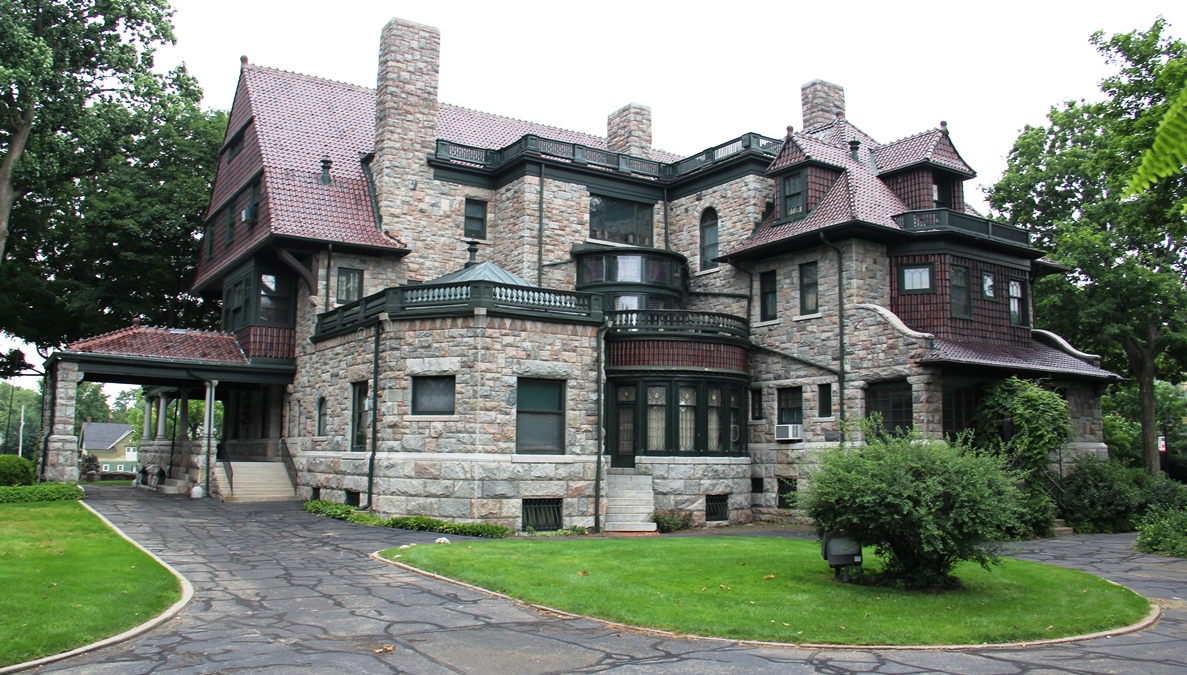
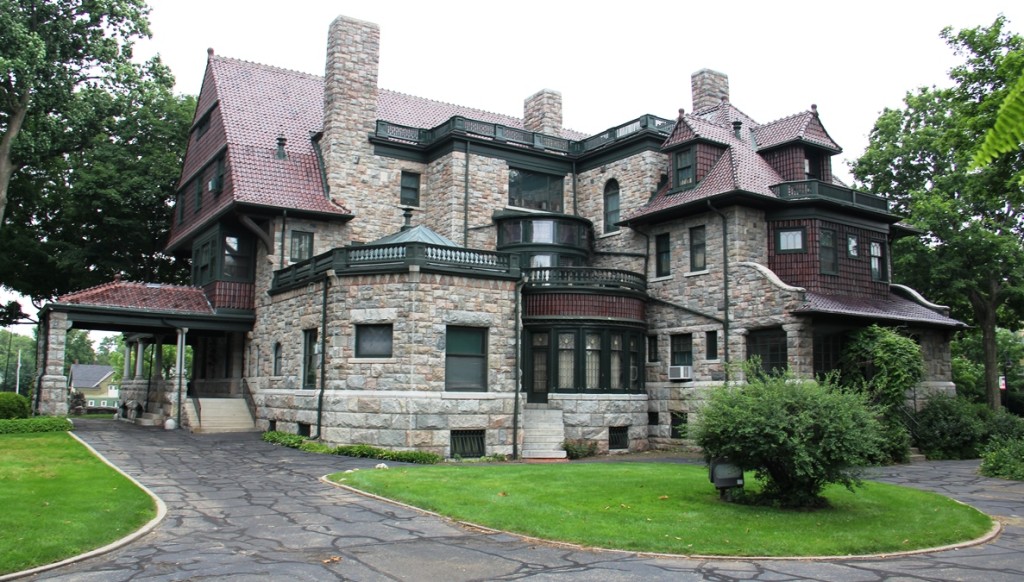 It isn’t often that all of the furnishings in a historic home are original to the house, especially a 38-room, 12,000 square foot mansion. That’s what you’ll see when you tour the Oliver Mansion in South Bend, Indiana, immersing you in the lavish lifestyle of its owners, the J.D. and Anna Oliver family, as it was in the 1930s.
It isn’t often that all of the furnishings in a historic home are original to the house, especially a 38-room, 12,000 square foot mansion. That’s what you’ll see when you tour the Oliver Mansion in South Bend, Indiana, immersing you in the lavish lifestyle of its owners, the J.D. and Anna Oliver family, as it was in the 1930s.
J.D. Oliver’s father James immigrated to the United States with his family from Scotland when he was 12 years old. He took a job working on a farm where he became familiar with plows. As an adult James was a partner in the South Bend Iron Company and experimented with improving the field plow. He registered 45 patents on improved plow design during his lifetime. The company flourished, and James Oliver became wealthy. J.D. eventually took over as President of the company. By that time the company name had been changed to Oliver Chilled Plow Works.
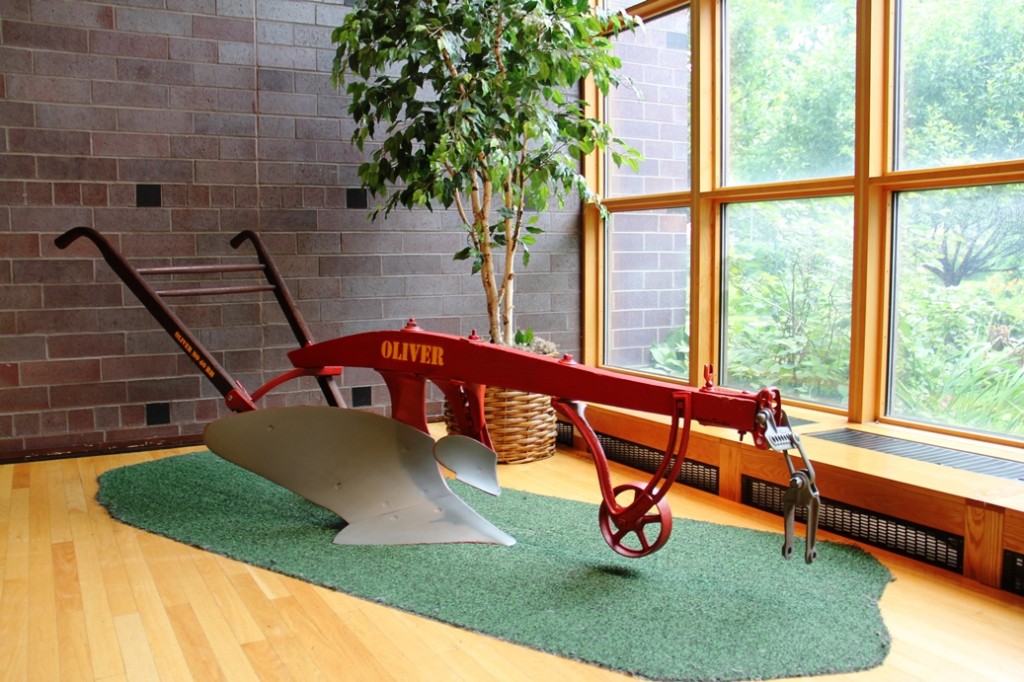 J.D. married Anna in 1885, and in 1886 they moved into their new Indiana fieldstone Romanesque Queen Anne home. The Olivers had four children, and as the family grew, so did the Oliver Chilled Plow Works, becoming the largest plow factory in the world at the turn of the century. The family lived lavishly, were socially active and also deeply involved in community service. The family’s community service continued through the generations, as J.D. and Anna’s grandchildren donated the mansion and its furnishings to South Bend’s Center for History.
J.D. married Anna in 1885, and in 1886 they moved into their new Indiana fieldstone Romanesque Queen Anne home. The Olivers had four children, and as the family grew, so did the Oliver Chilled Plow Works, becoming the largest plow factory in the world at the turn of the century. The family lived lavishly, were socially active and also deeply involved in community service. The family’s community service continued through the generations, as J.D. and Anna’s grandchildren donated the mansion and its furnishings to South Bend’s Center for History.
Don’t miss a Midwest Wanderer post. For a FREE subscription, enter your e-mail address in the Subscribe2 box to the left and click Subscribe.
The home is set up as a working house in the 1930s. Though daughter Catherine, who never married and lived out her life in the mansion, sold or gave away furnishings, recipients of those items have returned many of them.
Each of the 14 fireplaces is different, some more ornate than others.
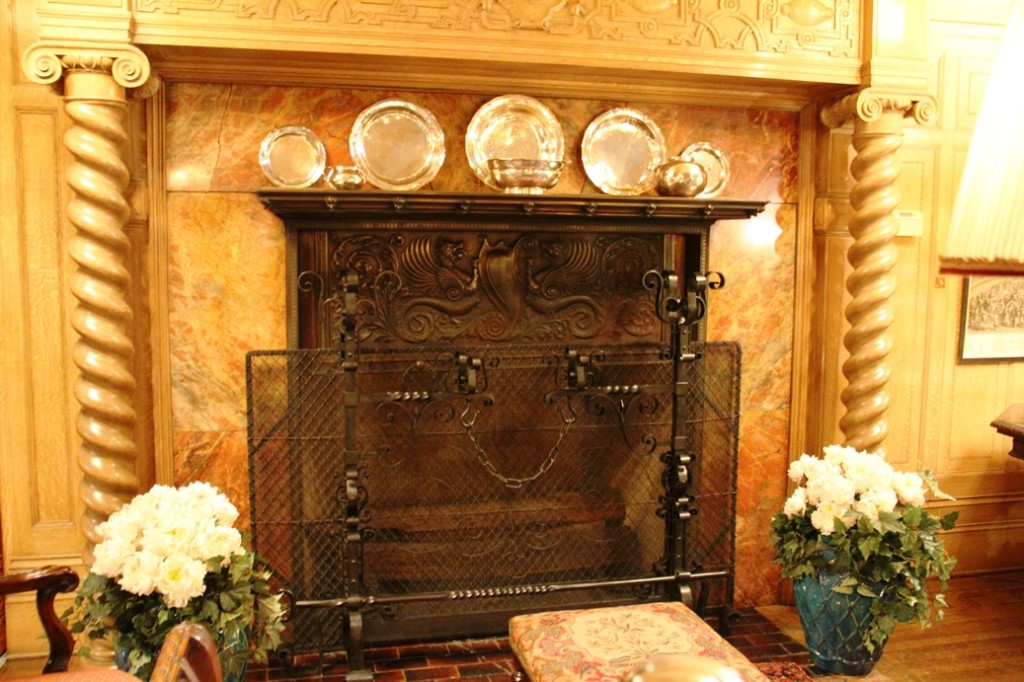
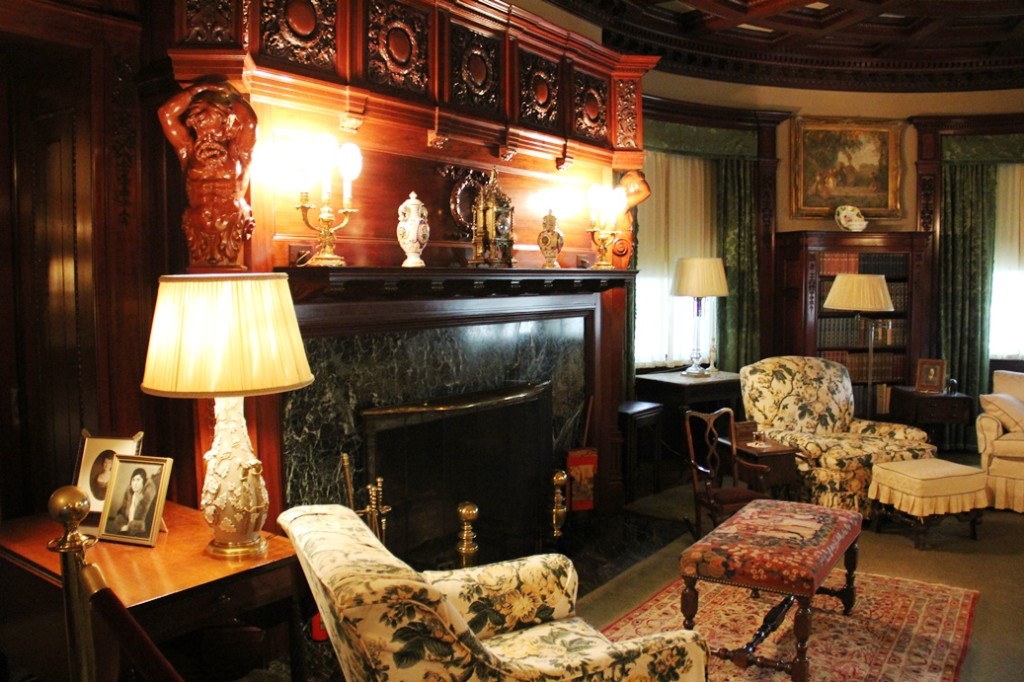
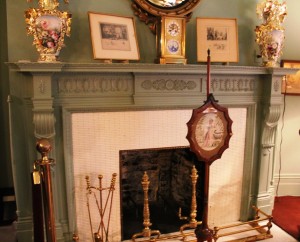 Carved woodwork on fireplace hearths, railings, even on the ceilings exude richness.
Carved woodwork on fireplace hearths, railings, even on the ceilings exude richness.
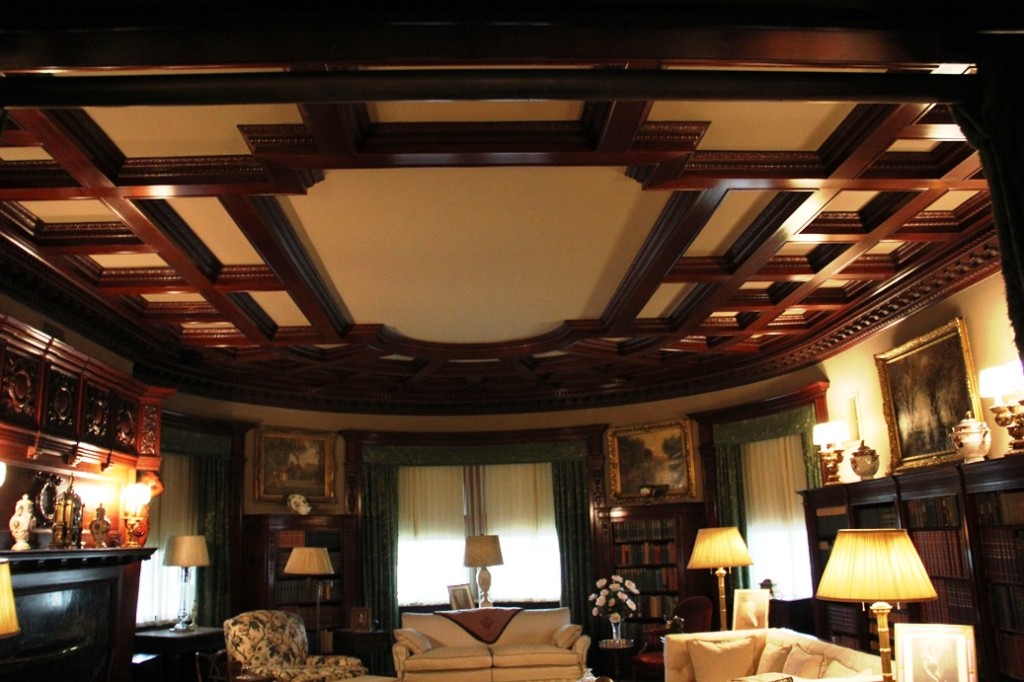
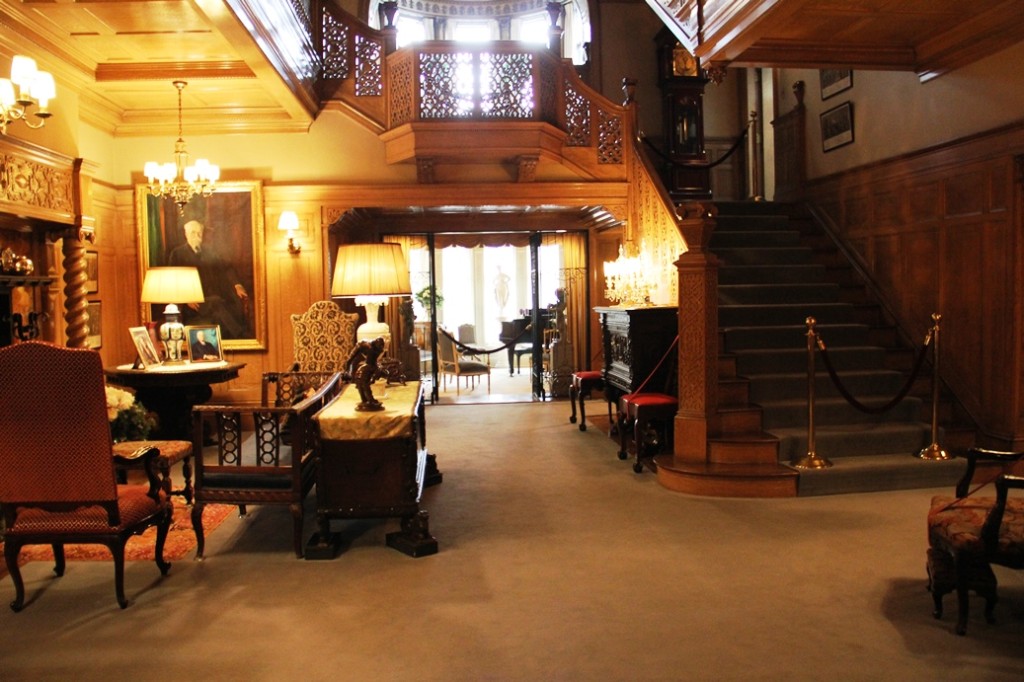
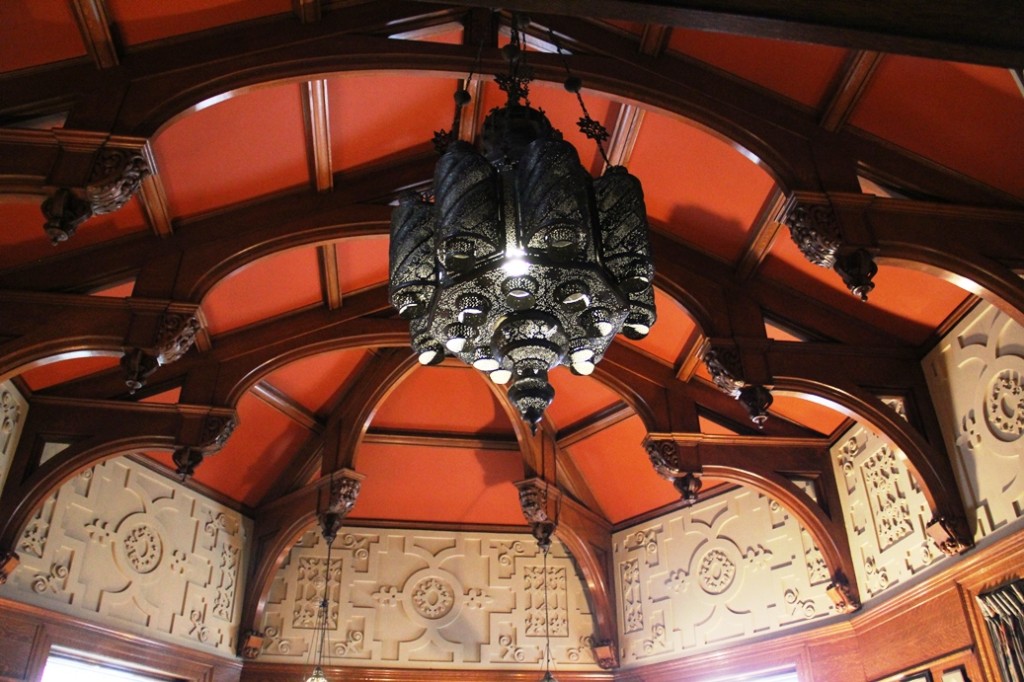 The office and the game room have especially masculine features.
The office and the game room have especially masculine features.
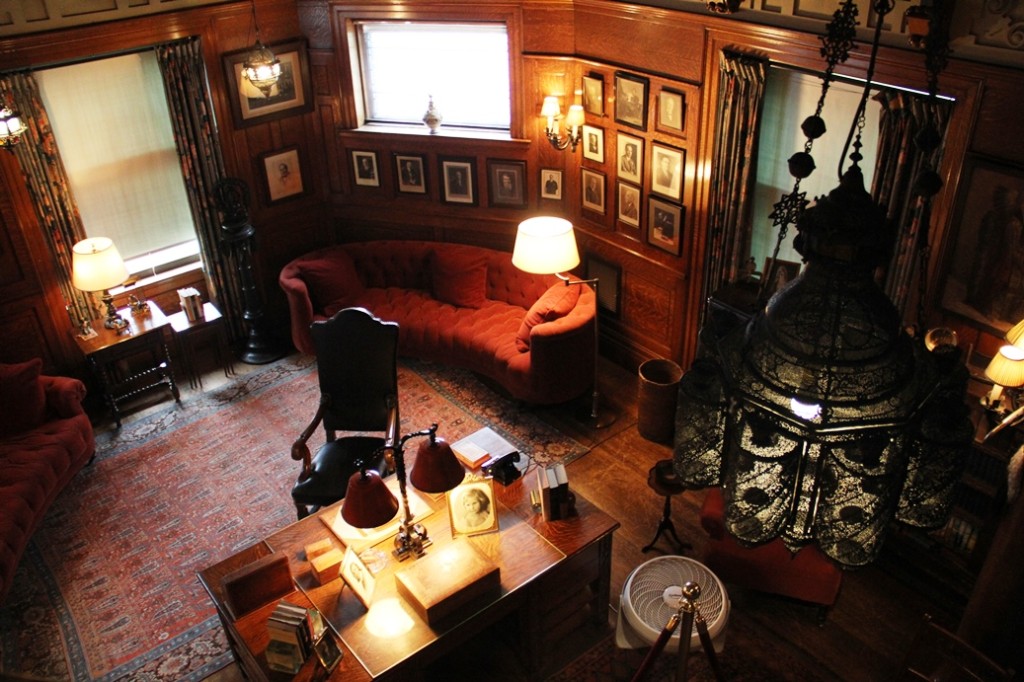
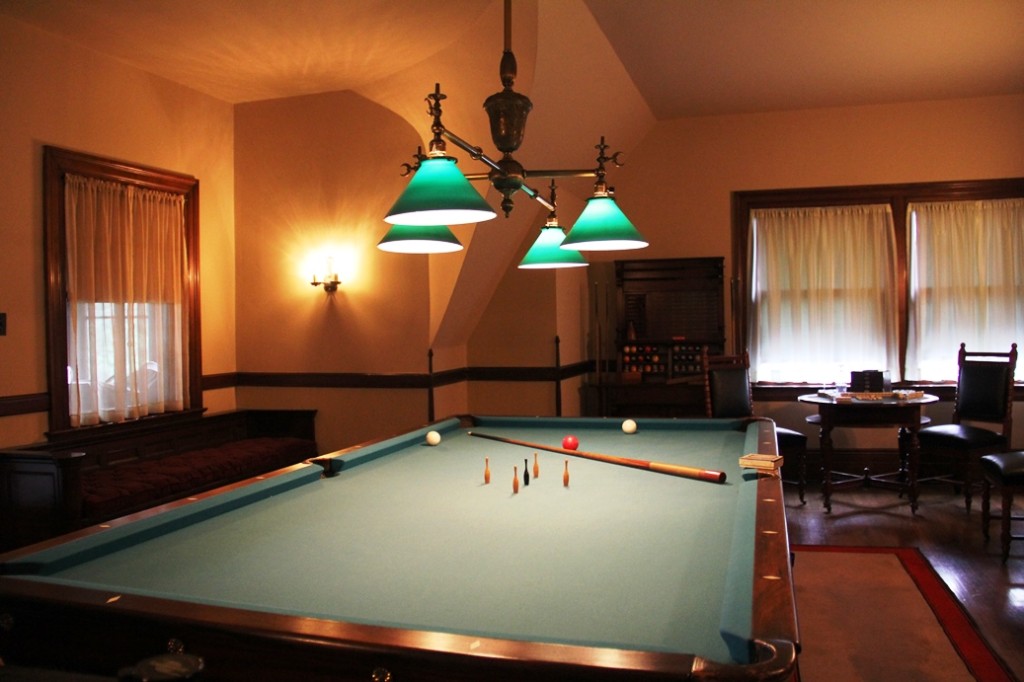 Leaded glass windows in several rooms soften the harshness of the dark wood, and fabrics soften the decor in the dining room and music room.
Leaded glass windows in several rooms soften the harshness of the dark wood, and fabrics soften the decor in the dining room and music room.
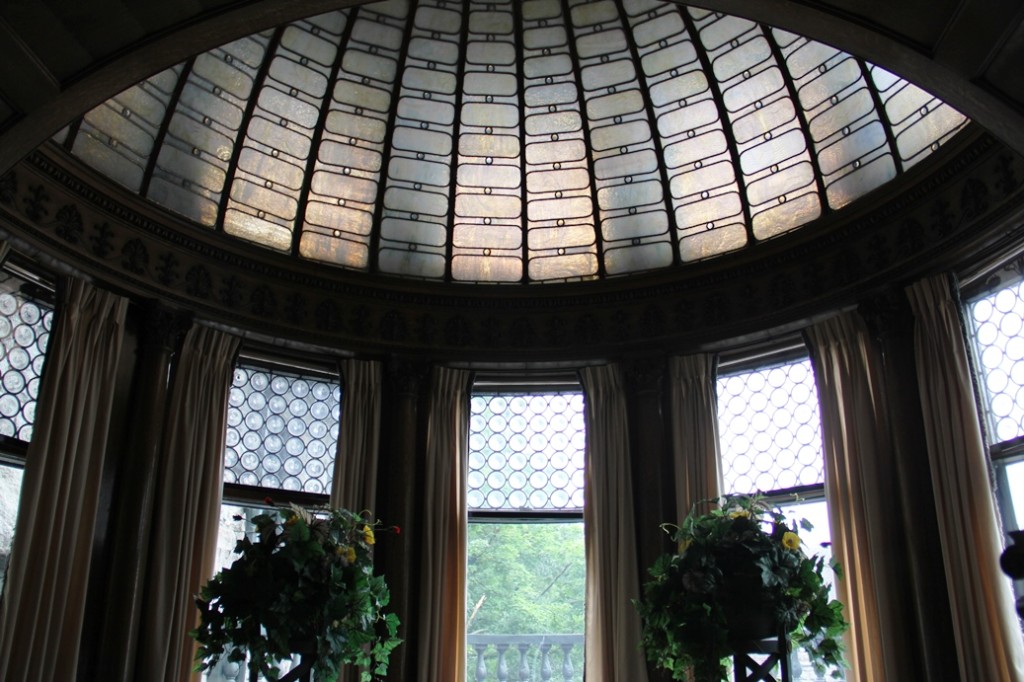 The kitchen isn’t as fancy, but it’s spacious, with multiple stoves and plenty of icebox and storage space needed to prepare for large parties.
The kitchen isn’t as fancy, but it’s spacious, with multiple stoves and plenty of icebox and storage space needed to prepare for large parties.
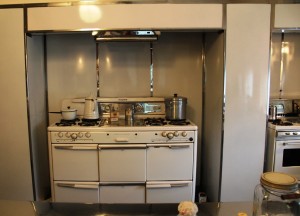
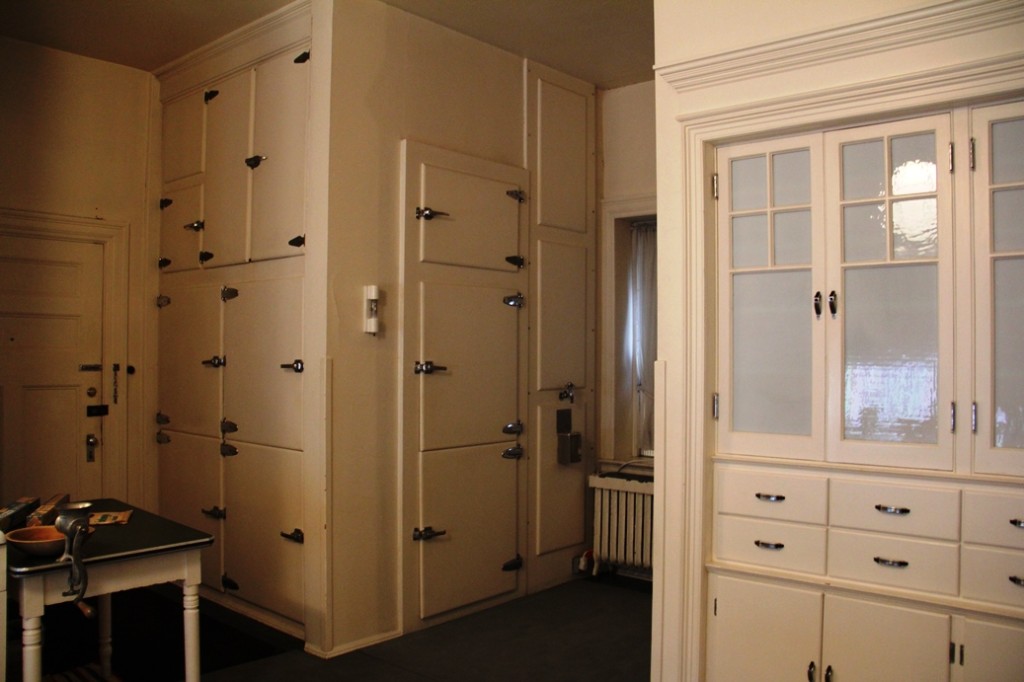 Catherine lived her adult life mostly on the second floor, which she had redone in green art deco.
Catherine lived her adult life mostly on the second floor, which she had redone in green art deco.
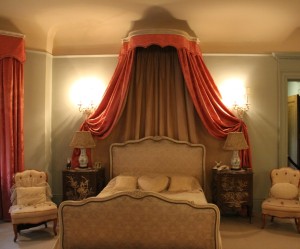 After J.D. and Anna’s son Joseph’s wife was thrown from a horse and killed, Joseph came back to live in the family home. He stayed mainly on the third floor. His seven shaving brushes, one for each day of the week, are on display in the bathroom.
After J.D. and Anna’s son Joseph’s wife was thrown from a horse and killed, Joseph came back to live in the family home. He stayed mainly on the third floor. His seven shaving brushes, one for each day of the week, are on display in the bathroom.
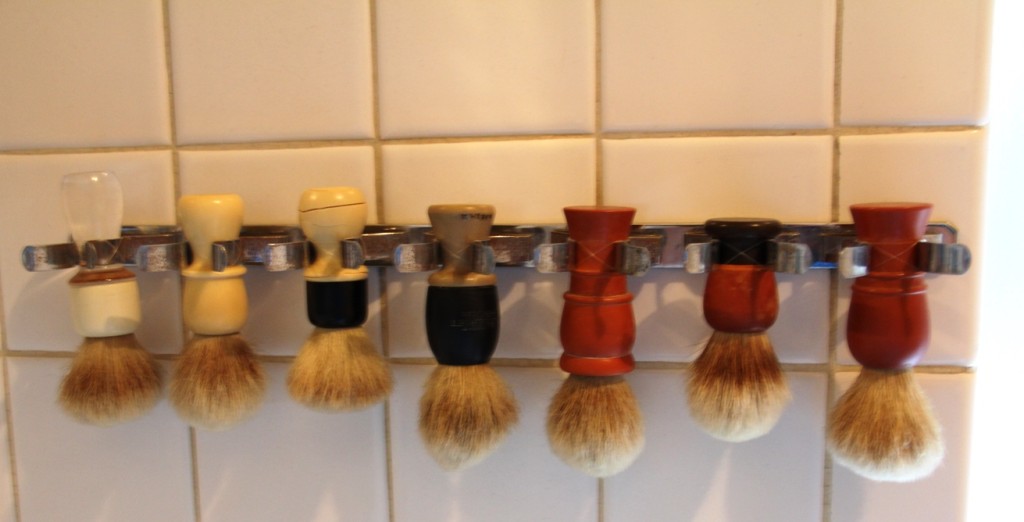 Beautifully manicured gardens surround the mansion.
Beautifully manicured gardens surround the mansion.
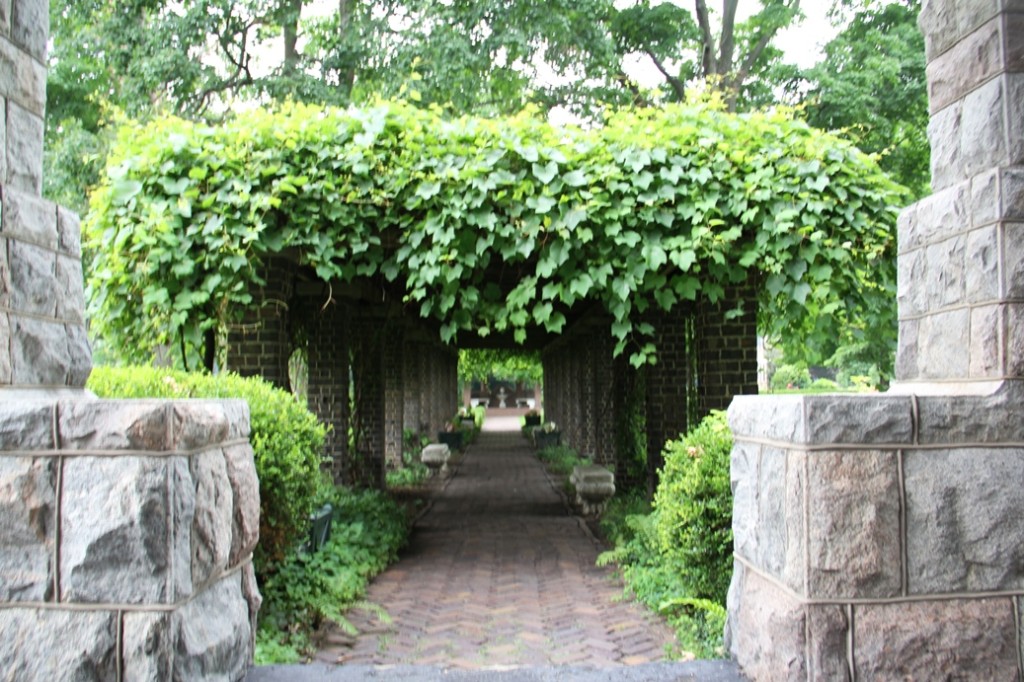 Besides the mansion, the tour also includes a look at the Polish workers’ house, less than a five minute walk from the main house. The house, comfortable quarters for the Olivers’ domestic staff, was built in 1851. The Olivers added a bathroom and other conveniences. Like the mansion, the workers’ house is decorated as it would have been in the 1930s.
Besides the mansion, the tour also includes a look at the Polish workers’ house, less than a five minute walk from the main house. The house, comfortable quarters for the Olivers’ domestic staff, was built in 1851. The Olivers added a bathroom and other conveniences. Like the mansion, the workers’ house is decorated as it would have been in the 1930s.
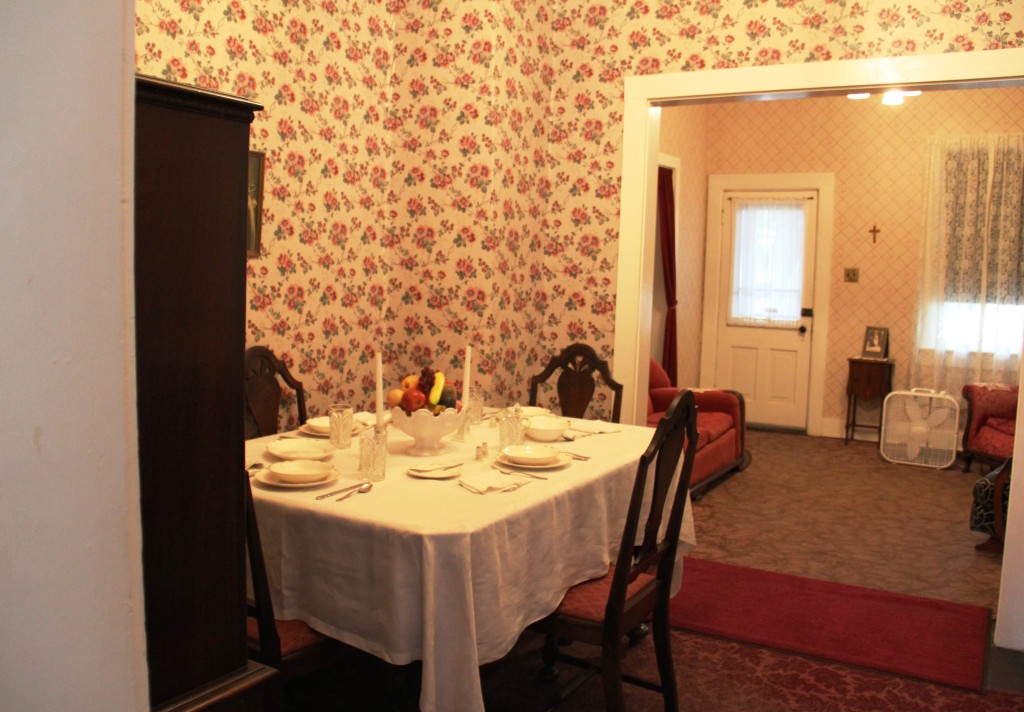
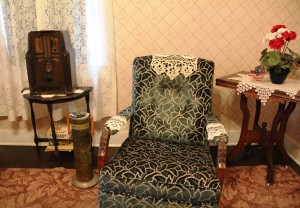 The History Museum provides tours of the Oliver Mansion seven days a week. The main entrance is shared with the Studebaker National Museum at 897 Thomas Street, South Bend, Indiana. Check the web site for tour times and admission rates.
The History Museum provides tours of the Oliver Mansion seven days a week. The main entrance is shared with the Studebaker National Museum at 897 Thomas Street, South Bend, Indiana. Check the web site for tour times and admission rates.
Disclosure: My visit to the Oliver Mansion was hosted by Visit South Bend Mishawaka and the History Museum, but any opinions expressed in this article are my own. Some of the pbotos were taken by Skip Reed and some by Connie Reed.
Other posts you may enjoy:
Studebaker Museum, South Bend: From Carriages to Automobiles
Touring the University of Notre Dame Campus, South Bend, Indiana
Tour the South Bend Chocolate Company Factory
Shop the South Bend Farmers Market Year Round
Thank you for reading Midwest Wanderer. Don’t miss a post. Enter your e-mail address below and click Subscribe to be notified whenever I publish another post. Subscription is FREE. After subscribing, be sure to click the link when you get the e-mail asking you to confirm. – Connie
Studebaker Museum, South Bend: From Carriages to Automobiles
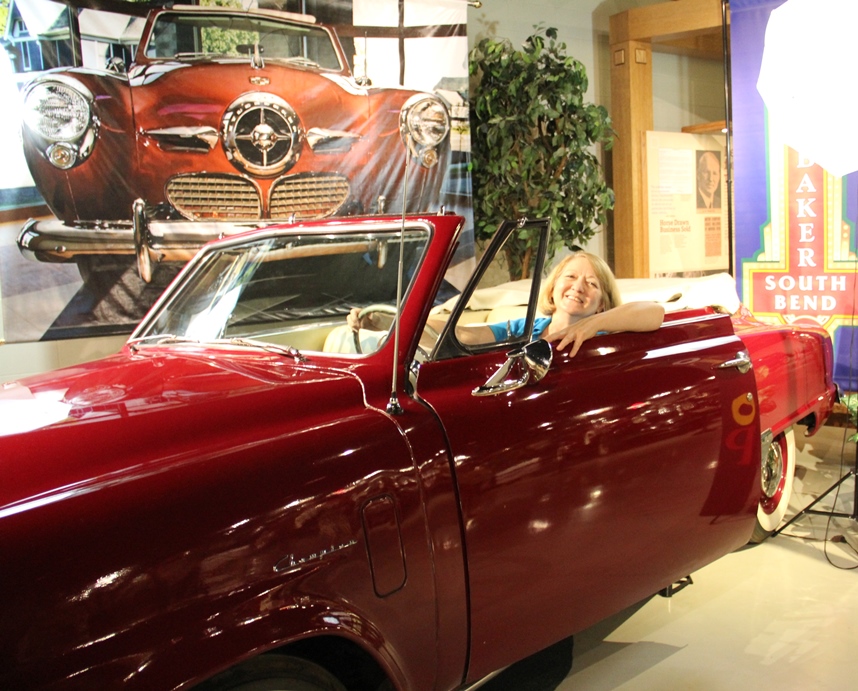
Few transportation companies successfully transitioned from manufacturing wagons and carriages to automobiles. Studebaker was one of the exceptions. In the early 1900s, the company moved from carriages to battery-powered cars. A few years later they transitioned to gasoline engines. The Studebaker National Museum in South Bend, Indiana, traces the history of the company from wagon to the last cars Studebaker manufactured, in the mid-1960s.
Tippecanoe Place: Dine in a Stately Old Mansion
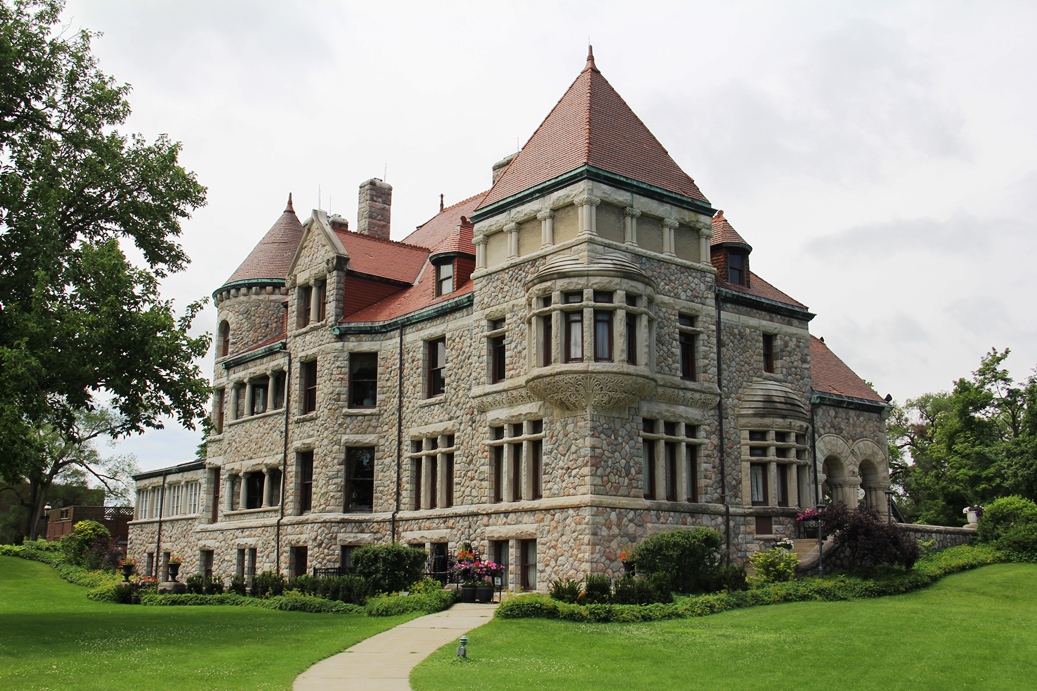
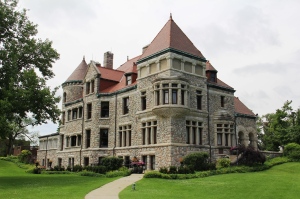 I love old mansions and am especially partial to old stone mansions. I also, of course, like a good meal. Put the two together, and it’s a sure winner. I had the pleasure of enjoying Sunday Brunch at the Tippecanoe Place restaurant in South Bend, Indiana, earlier this year. The opulent ambiance is a wonderful setting for a sumptuous meal.
I love old mansions and am especially partial to old stone mansions. I also, of course, like a good meal. Put the two together, and it’s a sure winner. I had the pleasure of enjoying Sunday Brunch at the Tippecanoe Place restaurant in South Bend, Indiana, earlier this year. The opulent ambiance is a wonderful setting for a sumptuous meal.
Dating back to 1889, the 26,000 square foot stately mansion was originally the home of Clement Studebaker, co-founder of South Bend’s Studebaker automobile manufacturing company. During World War II, the mansion served as headquarters for the Red Cross. Today Tippecanoe Place welcomes guests for lunch and dinner, as well as Sunday brunch
Don’t miss a Midwest Wanderer post. For a FREE subscription, enter your e-mail address in the Subscribe2 box to the left and click Subscribe.
I could feel the richness of the building just opening the heavy wood doors inset with leaded glass.
 I saw only a few of the mansion’s 40 rooms on my visit. Our seating was in the mansion’s light and airy drawing room, which includes one of the building’s 20 gorgeous fireplaces.
I saw only a few of the mansion’s 40 rooms on my visit. Our seating was in the mansion’s light and airy drawing room, which includes one of the building’s 20 gorgeous fireplaces.
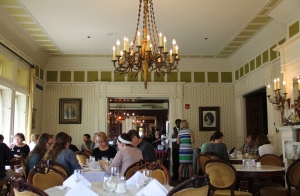
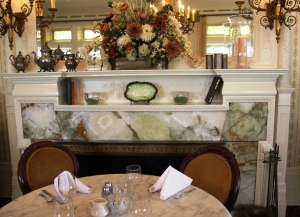 This alcove off to the side is perfect for a family get-together.
This alcove off to the side is perfect for a family get-together.
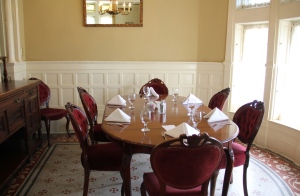 In contrast to the drawing room, the adjacent library exudes its richness through heavy, dark, carved molding. The library is where the brunch buffet was set up.
In contrast to the drawing room, the adjacent library exudes its richness through heavy, dark, carved molding. The library is where the brunch buffet was set up.
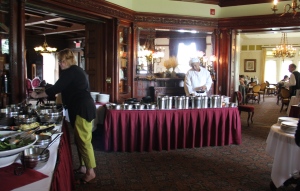 The brunch menu includes several hot breakfast and lunch items, including made-to-order omelets and hand-carved ham and beef.
The brunch menu includes several hot breakfast and lunch items, including made-to-order omelets and hand-carved ham and beef.
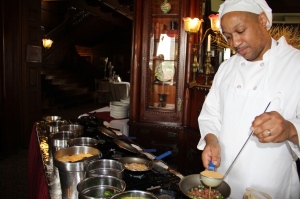 There were several salads and sides to choose from, including lots of fresh fruits.
There were several salads and sides to choose from, including lots of fresh fruits.
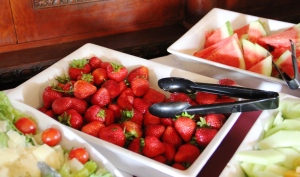 The dessert buffet, in a room separate from the rest of the food, had even more fruit, plus pastries, cookies, and cakes.
The dessert buffet, in a room separate from the rest of the food, had even more fruit, plus pastries, cookies, and cakes.
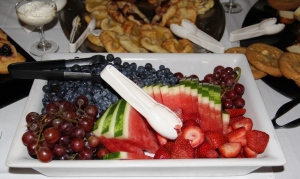
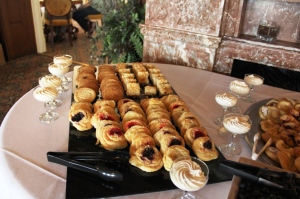
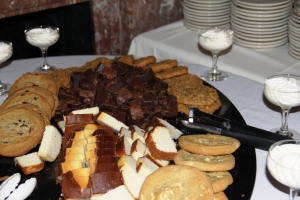 The dinner menu includes appetizers like Lobstercakes Tippecanoe and Baked Brie en Croute. Entrees are pasta, three cuts of prime rib, steaks, rack of lamb, seafood items like Pacific swordfish served with basil risotto, and poultry, including roasted Indiana duckling served with a choice of two sauces.
The dinner menu includes appetizers like Lobstercakes Tippecanoe and Baked Brie en Croute. Entrees are pasta, three cuts of prime rib, steaks, rack of lamb, seafood items like Pacific swordfish served with basil risotto, and poultry, including roasted Indiana duckling served with a choice of two sauces.
Lunch is mostly lighter fare, including salads like the fresh berry chicken salad, sandwiches like a smoked turkey Reuben or a portabella mushroom sandwich. Pasta, prime rib and a couple of grilled seafood dishes are available for lunch, as well.
Tippecanoe Place, located at 620 W Washington Street in South Bend, Indiana, is a great place to celebrate a special occasion or to treat yourself to a nice meal during your South Bend getaway. Check the web site for hours and menus. Closed Mondays.
Disclosure: My visit to Tippecanoe Places was hosted by Visit South Bend and Tippecanoe Place, but any opinions expressed in this post are my own.
Thank you for reading Midwest Wanderer. Don’t miss a post. Enter your e-mail address below and click Subscribe to be notified whenever I publish another post. Subscription is FREE. After subscribing, be sure to click the link when you get the e-mail asking you to confirm. – Connie
Other posts you may be interested in:
Touring the University of Notre Dame Campus, South Bend, Indiana
Café Navarre, South Bend IN: Top-Notch Farm-to-Table Dining
Tour the South Bend Chocolate Company Factory
Tour the South Bend Chocolate Company Factory
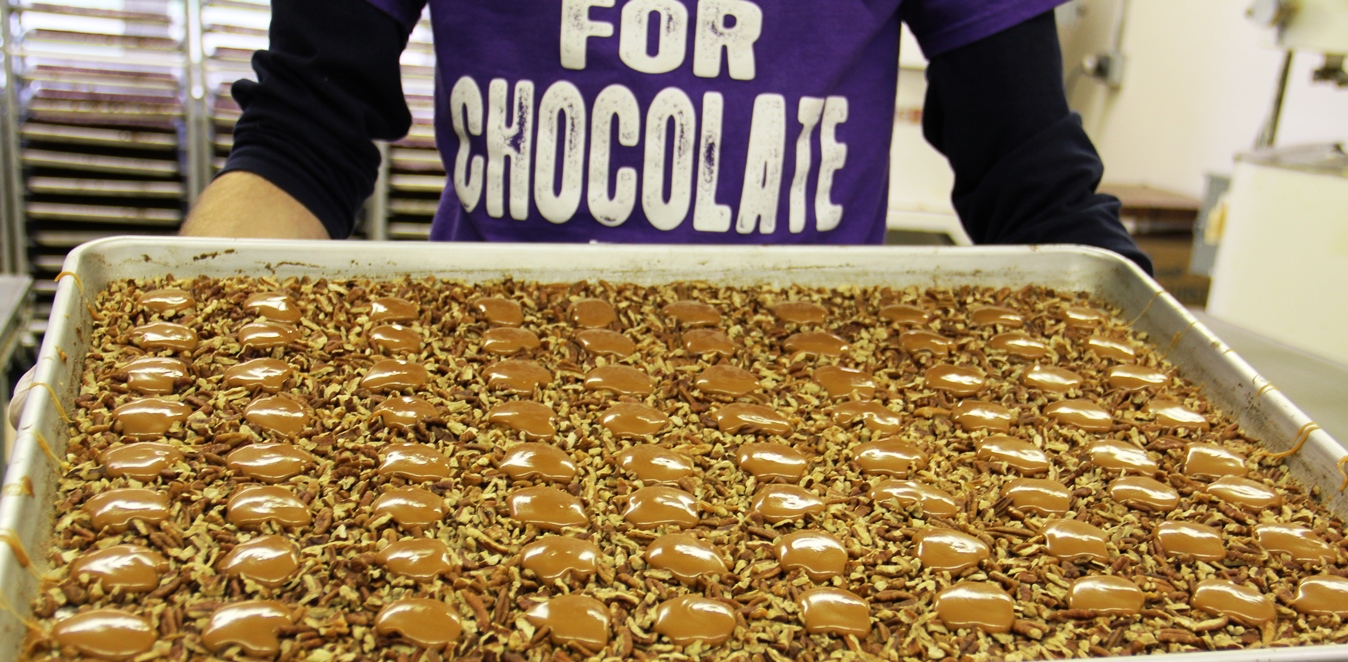
Dark chocolate is my downfall. One whiff of the decadent confection, and I sniff and follow the aroma waves like in a cartoon until I find the source. Dark chocolate covered nuts, dark chocolate covered dried cherries, bittersweet chocolate mousse, chocolate fudge cake with fudge frosting—you name it, when I smell it or see it, I cave. Forget the diet right now; I’ll eat salads for the rest of the week. So when I had an opportunity to tour Indiana’s South Bend Chocolate Company factory, of course I didn’t turn it down.
Before taking us into the production area, our tour guide, Chris, nicknamed Captain Crunch, gave us a lesson on where chocolate comes from. It starts with cocoa pods, which are harvested twice a year.
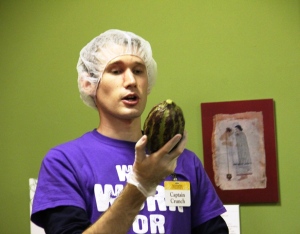 You have to crack the pod to get to the bean inside. There is only one bean per pod. Inside the bean are 20 to 60 cacao nibs, and that’s what’s used to make chocolate.
You have to crack the pod to get to the bean inside. There is only one bean per pod. Inside the bean are 20 to 60 cacao nibs, and that’s what’s used to make chocolate.
Chicago’s Blommer Chocolate Company, North America’s largest cocoa processor and ingredient supplier, turns the cacao nibs into giant, thick chocolate bars, which is what South Bend Chocolate Company starts with in making their candy.
Don’t miss a Midwest Wanderer post. For a FREE subscription, enter your e-mail address in the Subscribe2 box to the left and click Subscribe.
In the factory I was expecting to see the candy speeding past on conveyor belts like on the old I Love Lucy episode where Lucy and Ethel get jobs in a candy factory.
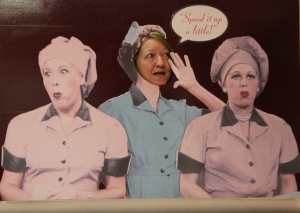 It turns out that production slows down on Saturdays, but the tradeoff to not seeing production in action is more samples. So although we saw the conveyor belts, they were at a standstill with no candy on them. Captain Crunch assured us that the belts don’t move quite as quickly as it did for Lucy and Ethel anyway.
It turns out that production slows down on Saturdays, but the tradeoff to not seeing production in action is more samples. So although we saw the conveyor belts, they were at a standstill with no candy on them. Captain Crunch assured us that the belts don’t move quite as quickly as it did for Lucy and Ethel anyway.
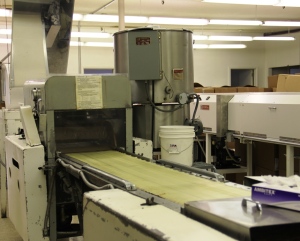 We did see the chocolate enrober that looks like a waterfall, where the candies are coated, as well as the chocolate melter that holds 500 pounds of chocolate.
We did see the chocolate enrober that looks like a waterfall, where the candies are coated, as well as the chocolate melter that holds 500 pounds of chocolate.
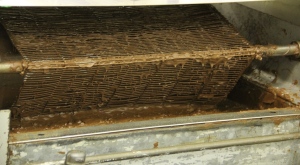 We also saw two varieties of candy waiting for the next process step: fudge and pecan patties (like Turtles).
We also saw two varieties of candy waiting for the next process step: fudge and pecan patties (like Turtles).
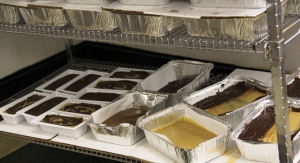
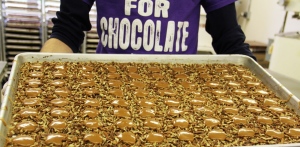 After touring the production area, we were allowed to choose two chocolate samples.
After touring the production area, we were allowed to choose two chocolate samples.
That was the end of the free basic tour. However, we were on the Inside Scoop Tour (fee is $4), so we got an added bonus. We dipped a spoon into chocolate that could be used then to stir a hot beverage.
 While we were waiting for our spoons to cool and harden, we watched an educational but humorous film about chocolate making.
While we were waiting for our spoons to cool and harden, we watched an educational but humorous film about chocolate making.
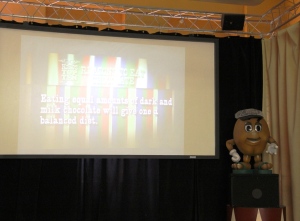 Following the tour, we wandered through the small chocolate museum that includes information about the history of candy, as well nostalgic displays of candy packaging, including Mounds, one of my favorites.
Following the tour, we wandered through the small chocolate museum that includes information about the history of candy, as well nostalgic displays of candy packaging, including Mounds, one of my favorites.
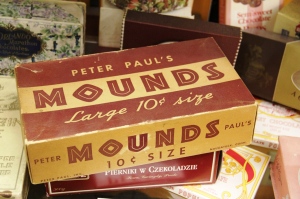 I was surprised to see a display of Frango Mints boxes, the candy that at one time was made in Chicago’s flagship Marshall Field’s store. (The store is now Macy’s, and Macy’s carries Frango Mints under the Marshall Field name.)
I was surprised to see a display of Frango Mints boxes, the candy that at one time was made in Chicago’s flagship Marshall Field’s store. (The store is now Macy’s, and Macy’s carries Frango Mints under the Marshall Field name.)
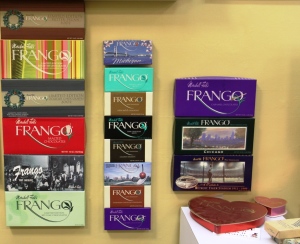 One last stop before leaving: the outlet store, where I stocked up my own stash of chocolate, all dark.
One last stop before leaving: the outlet store, where I stocked up my own stash of chocolate, all dark.
Tour are offered at the South Bend Chocolate Company factory, located at 3300 West Sample Street in South Bend, Indiana, Monday through Saturday. The free basic tour runs 20 minutes; the Inside Scoop Tour is 45 minutes. Check the web site for tour and outlet store hours.
Disclosure: My tour of the South Bend Chocolate Company factory was hosted by Visit South Bend and the South Bend Chocolate Company, but any opinions expressed in this post are my own.
Thank you for reading Midwest Wanderer. Don’t miss a post. Enter your e-mail address below and click Subscribe to be notified whenever I publish another post. Subscription is FREE. After subscribing, be sure to click the link when you get the e-mail asking you to confirm. – Connie
Touring the University of Notre Dame Campus, South Bend, Indiana
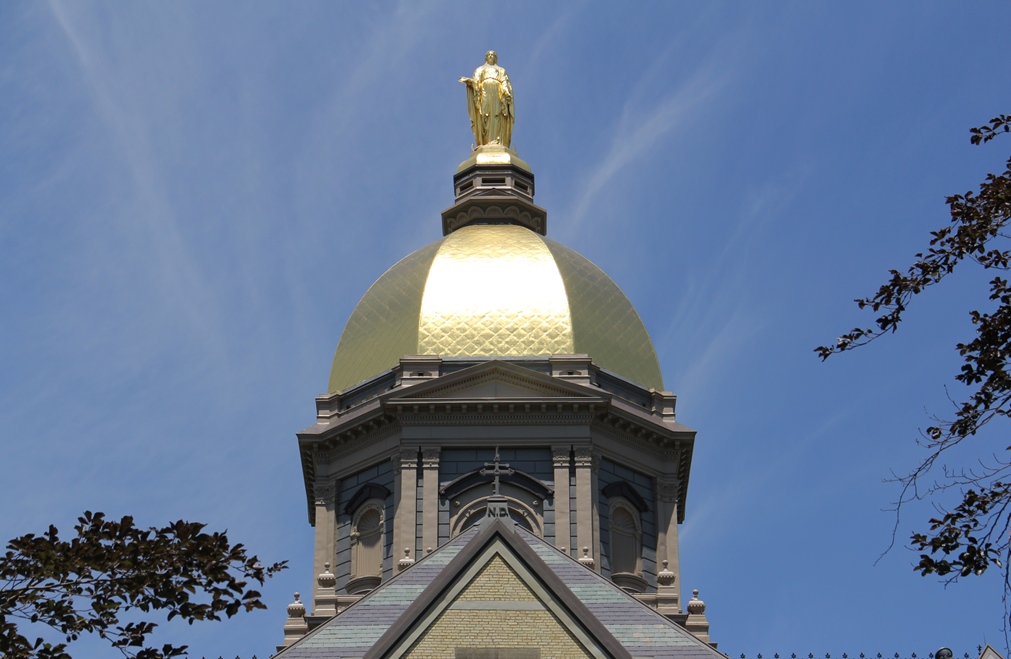
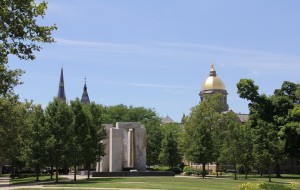 Football, the Gold Dome and top academics were really the only things I knew about the University of Notre Dame before I toured the campus last month. Having been there only once, decades ago, I didn’t remember, or maybe didn’t appreciate at the time, the beauty of the campus, including the fascinating art and architecture, as much a draw for tourists as the school’s athletics programs.
Football, the Gold Dome and top academics were really the only things I knew about the University of Notre Dame before I toured the campus last month. Having been there only once, decades ago, I didn’t remember, or maybe didn’t appreciate at the time, the beauty of the campus, including the fascinating art and architecture, as much a draw for tourists as the school’s athletics programs.
I had the honor of taking a tour led by 1964 Notre Dame alumnus Jack Lafferty, who often conducts private group tours of the campus and is a wealth of information about the buildings, the artwork and the history of the university.
Don’t miss a Midwest Wanderer post. For a FREE subscription, enter your e-mail address in the Subscribe2 box to the left and click Subscribe.
There are so many different varieties of trees on the grounds, the campus can actually be considered an arboretum. From the beginning, Father Sorin, the university founder, brought a diverse variety of trees to the campus, and the tradition continued later. This sycamore is about 250 years old.
The Main Building, used mostly for administration today, was built in 1879 after the original building was destroyed in a fire. In the beginning the Main Building included classrooms, dining and living space.
The building, on the National Register of Historic Places, Is best known for its gold dome with a statue of Mary, Mother of God, atop of the dome. The dome has been regilded five times, the latest in 2005 at a cost of $300,000.
Inside the building, stand in the circle on the floor in the center of the building and look up to see the inside of the dome.
The Rosary Crown, on display in the Main Building was originally planned to be placed on the statue atop the dome. Commissioned in France by university benefactors, the Rosary Crown includes fifteen decades of crystal beads and fifteen plates depicting the mysteries of the rosary. The crown was never placed on the dome but instead was placed on another statue of Mary inside Sacred Heart Church, was stolen, recovered and repaired.
The Grotto at Notre Dame is a one-seventh size replica of the Grotto of Our Lady of the Lourdes in France, where the Virgin Mother appeared to St. Bernadette in 1858. The rosary is prayed at the grotto every day at 6:45 p.m.
The Basilica of the Sacred Heart may or may not be open to tour, depending on church events, but if you get the chance, do go in. The beauty will astound you. The basilica wasn’t open for tours on my visit, but I went to Sunday Mass there and was able to see it then.
Sculptures and other works of art are scattered throughout the campus, but a few of them stand out due to sheer size. The Stonehenge Fountain serves as a memorial to Notre Dame alumni who lost their lives in the military.
At the Hesburgh Library, a large mural, known as “Touchdown Jesus,” reflects in the Reflecting Pool, creating a double image.
Moving to the athletic side of Notre Dame, you can view seven Heisman trophies in the Sports Heritage Hall of Fame during the school year. Recipients are allowed to take them home during the summer months, so on my visit, only one Heisman trophy was on display.
The Sports Heritage Hall of Fame is located in the concourse of the Purcell Center, home to the Fighting Irish basketball and volleyball teams.
We didn’t get to tour the football stadium, but we did go past it and peek into the gates, which were under construction at the time.
A helmet for each All-American Notre Dame player is on the wall inside the gates.
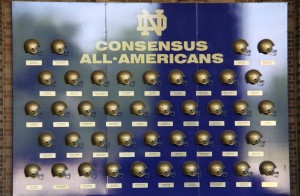 Each of the stadium’s twelve gates is named after a winning coach. Notre Dame has had eleven national championships, so one gate has yet to be named.
Each of the stadium’s twelve gates is named after a winning coach. Notre Dame has had eleven national championships, so one gate has yet to be named.
The Notre Dame architecture, art and athletics are worth a visit to the university campus. As I mentioned, my tour guide, Jack Lafferty, conducts mostly private tours. However, free public campus tours are led Monday through Friday by Notre Dame students. Tours do not include the stadium. Check the Notre Dame web site for tour details.
Disclosure: My tour of the University of Notre Dame campus was hosted by Visit South Bend, but any opinions expressed in this post are my own.
Thank you for reading Midwest Wanderer. Don’t miss a post. Enter your e-mail address below and click Subscribe to be notified whenever I publish another post. Subscription is FREE. After subscribing, be sure to click the link when you get the e-mail asking you to confirm. – Connie
